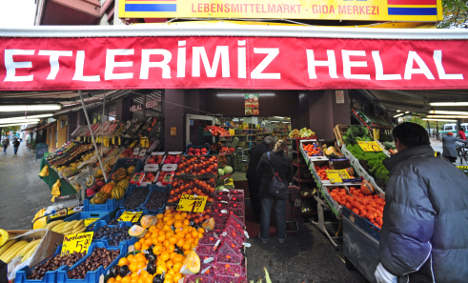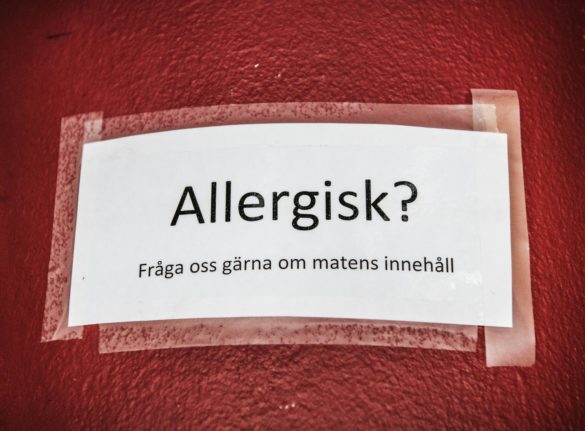Halal food is still a rare sight in German supermarkets, despite 2.7 million people of Turkish origin living in the country, whom together experts say spend come €17.6 billion, annually.
And yet Turkish tastes are still not catered for in most German supermarkets. Many people from immigrant backgrounds rely on the country’s 10,000 Turkish supermarkets to get their groceries, in which up to 90 percent of all products are imported directly from Turkey.
Around 3,500 of these Turkish-orientated shops sell more than just fruit, veg and meat; something which head of the Atiad Turkish trade association Ömer Saglam said should in theory make them potentially interesting as distribution channels for German products.
Yet Saglam said German manufacturers remain daunted by the effort involved in cracking the Turkish market – for one because there are few recognisable nationwide Turkish supermarket chains.
“There’s no branch network like with German chains, every supermarket has to be served individually.” said Saglam.
“Many manufacturers are hesitating,” said Engin Ergün, head of the ethnic marketing agency Ethno IQ, and added that another reason for reluctance was the need for targeted advertising.
“Eighty percent of Turkish people in Germany watch Turkish TV. Manufacturers should consider this, especially if it’s a product which needs explaining,” said Ergün.
The real potential, say experts, lies in making products which conform to halal rules. “The second and third generation would like German brand products which conform to Islamic tastes and rules,” said Ergün.
But while some German manufacturers have made nods to the market – the most famous examples being Harbio’s gummy bears made without pig-derived gelatine, or Knorr’s Turkish soup range – many supermarkets have been very slow on the uptake.
“Halal is always a question of trust,” said Saglam, adding that Turkish customers preferred the greater range in Turkish supermarkets.
Faced with the challenge of wooing this as-yet untapped market, some German chains have made steps towards catering for Turkish tastes. Edeka is one supermarket eyeing the market with interest.
“Generally we are seeing a growing demand for halal products, focused around articles such as meat and sausage products, dairy products and sweets,” said an Edeka spokesperson.
But this, said Ergün, is simply not enough to tempt Turkish customers away from the Turkish-made products available in other shops.
“It’s not enough for German supermarkets to stick a couple of products on the shelves. The customers want a wide selection,” he said.
DPA/The Local/jlb



 Please whitelist us to continue reading.
Please whitelist us to continue reading.
Member comments